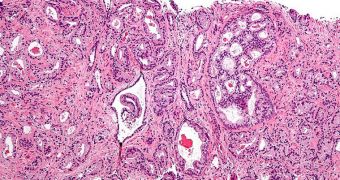A team of experts from the Rice University has recently determined that cancer cells can be destroyed in vivo inside animal models, if plasmonic, nanoscale bubbles are used.
These tiny structures are generated in regions immediately adjacent to gold nanoparticles, as the formations are being struck by laser pulses.
The way the plasmons act is by producing tiny, shiny vapor bubbles around the target cells. The bubbles then go on to selectively identify and kill cancerous cells.
The discovery was made in the lab of Rice physicist Dmitri Lapotko, who was the leader of the research team at the university.
Details of the investigation appear in a paper published in the October print issue of the esteemed scientific journal Biomaterials.
Basically, what the Rice team managed to prove was that guided ablation of cancer cells in a living organism is possible without any damage coming to the host.
The investigators used zebra fish implanted with live human prostate cancer cells for this particular study, which they attacked with nanobubble theranostics.
This is the term used to refer to the process of tailoring specific drugs and therapies to the need of individuals. It is the final goal of research conducted into the fields of predictive medicine, personalized medicine, integrated medicine, pharmacodiagnostics and Dx/Rx partnering.
“It's not a particle that kills the cancer cell, but a transient and short event. We're converting light energy into mechanical energy,” explains Dmitri Lapotko.
This marks one of the first instances ever when cancer therapies are approached from the point of view of physics, researchers say. But the results do have potential.
“Lapotko and his colleagues developed the concept of cell theranostics to unite three important treatment stages – diagnosis, therapy and confirmation of the therapeutic action – into one connected procedure,” says a press release by Rice experts.
“Being a stealth, on-demand probe with tunable function, the plasmonic nanobubble can be applied to all areas of medicine, since the nanobubble mechanism is universal and can be employed for detecting and manipulating specific molecules, or for precise microsurgery,” Lapotko concludes.
The work done at Rice is being recognized by a grant awarded by the US National Institutes of Health (NIH).

 14 DAY TRIAL //
14 DAY TRIAL //